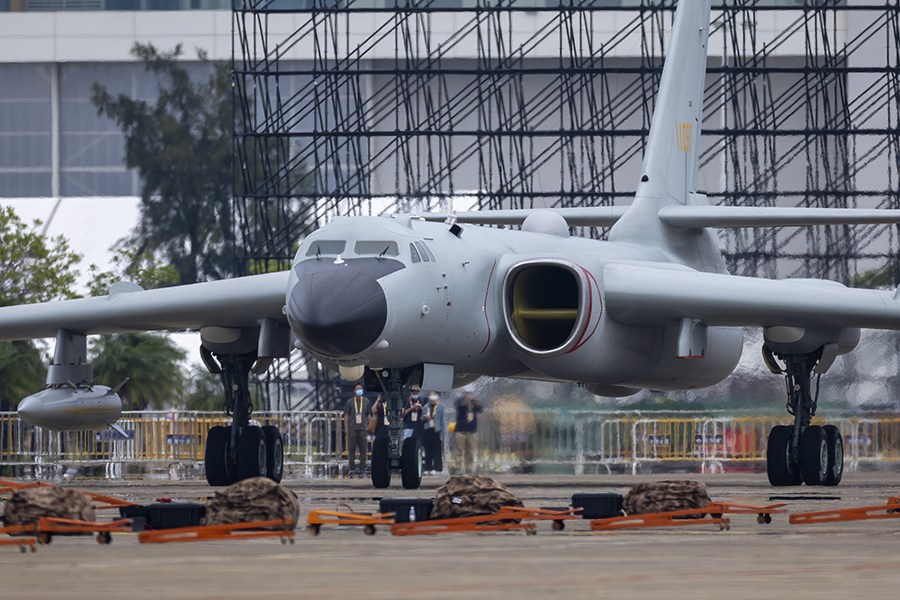"In my home there are few publications that we actually get hard copies of, but [Arms Control Today] is one and it's the only one my husband and I fight over who gets to read it first."
A New U.S. Strategy Against WMD Threats
November 2023
By Mohammadreza Giveh
The U.S. Defense Department has released a new strategy for countering weapons of mass destruction (WMD) around the world, arguing that the threats from nuclear, chemical, biological, and radiological weapons have increased and changed significantly since 2014.
 “For nearly two decades, the security environment required the department to focus on counterterrorism and counterinsurgency operations [and] prioritize managing WMD risk emanating from hostile, fragile or failed states and safe havens,” according to the strategy document released on Sept. 28.
“For nearly two decades, the security environment required the department to focus on counterterrorism and counterinsurgency operations [and] prioritize managing WMD risk emanating from hostile, fragile or failed states and safe havens,” according to the strategy document released on Sept. 28.
But now the United States is facing a “pacing” challenge from China and an “acute” threat from Russia while Iran and North Korea are considered “persistent” threats and such adversaries “seek to leverage [weapons of mass destruction] to influence and constrain the United States across the spectrum of conflict,” the document said.
It argued that “the department must now recapitalize, and in some cases reconstitute, its ability to conduct large-scale joint operations within a WMD-contested battlespace.”
The document, entitled the Countering Weapons of Mass Destruction Strategy, expands on the Biden administration’s 2022 National Defense Strategy. It lays out four priorities: defending the homeland from WMD attacks; deterring WMD use against the United States and its allies and partners; building a joint force to prevail in an environment where chemical, biological, radiological, and nuclear threats are contested; and preventing new WMD threats.
The United States is set to undertake these activities “in an integrated approach along with military, diplomatic, and economic instruments of power” to diminish the political advantage gained from WMD use in an adversary’s decision calculus and “demonstrate the undesirable costs [the adversary] will face should it use” these weapons, it said.
Defense Secretary Lloyd Austin drove home this point in his introduction to the strategy document. “We will sustain and broaden our work in collaboration with other U.S. departments, agencies, allies and partners to deter [WMD] use,” he wrote. “If deterrence fails, we will field a force that is resilient and prepared to prevail in a [WMD] contested environment.”
U.S. extended deterrence is one tool that underlies the new strategy. An example cited by Richard Johnson, deputy assistant secretary of defense for nuclear and countering weapons of mass destruction policy, was the Washington Declaration in April 2023 between U.S. President Joe Biden and South Korean President Yoon Suk Yeol. He said that the declaration reflected a U.S. effort to integrate its nuclear forces with South Korea to prevent an unintended escalation of tensions with North Korea and to enhance deterrence. Johnson, speaking at an event in Washington on Oct. 18, said this approach prevents proliferation, presumably referring to South Korean support for developing its own nuclear weapons. (See ACT, May 2023.)
The strategy document notes the global availability of dual-use technologies, particularly biotechnology, and said that adversaries are adapting to U.S. counterproliferation measures. These two defining features of the evolving global security environment must be addressed.
In a noteworthy addition to the last strategy published in 2014, the new document recognizes emerging technologies such as big data and artificial intelligence, multidomain WMD misinformation pursuits by China and Russia, and the complexity of determining a biological weapons attack as exacerbating new features of WMD activities.
The WMD document assesses the risk from China in the context of the People’s Liberation Army’s aggressive expansion and modernization of its nuclear forces in combination with the ambiguity about the conditions under which China would act outside of its declared policy of no first use of nuclear weapons. It also expresses concern that China violated the Chemical Weapons Convention and the Biological Weapons Convention.
The different strategic approaches in the 2014 and 2023 defense strategy documents reflect a shift toward a more dynamic, proactive, and comprehensive approach to weapons of mass destruction, considering a wider array of factors and resources.
